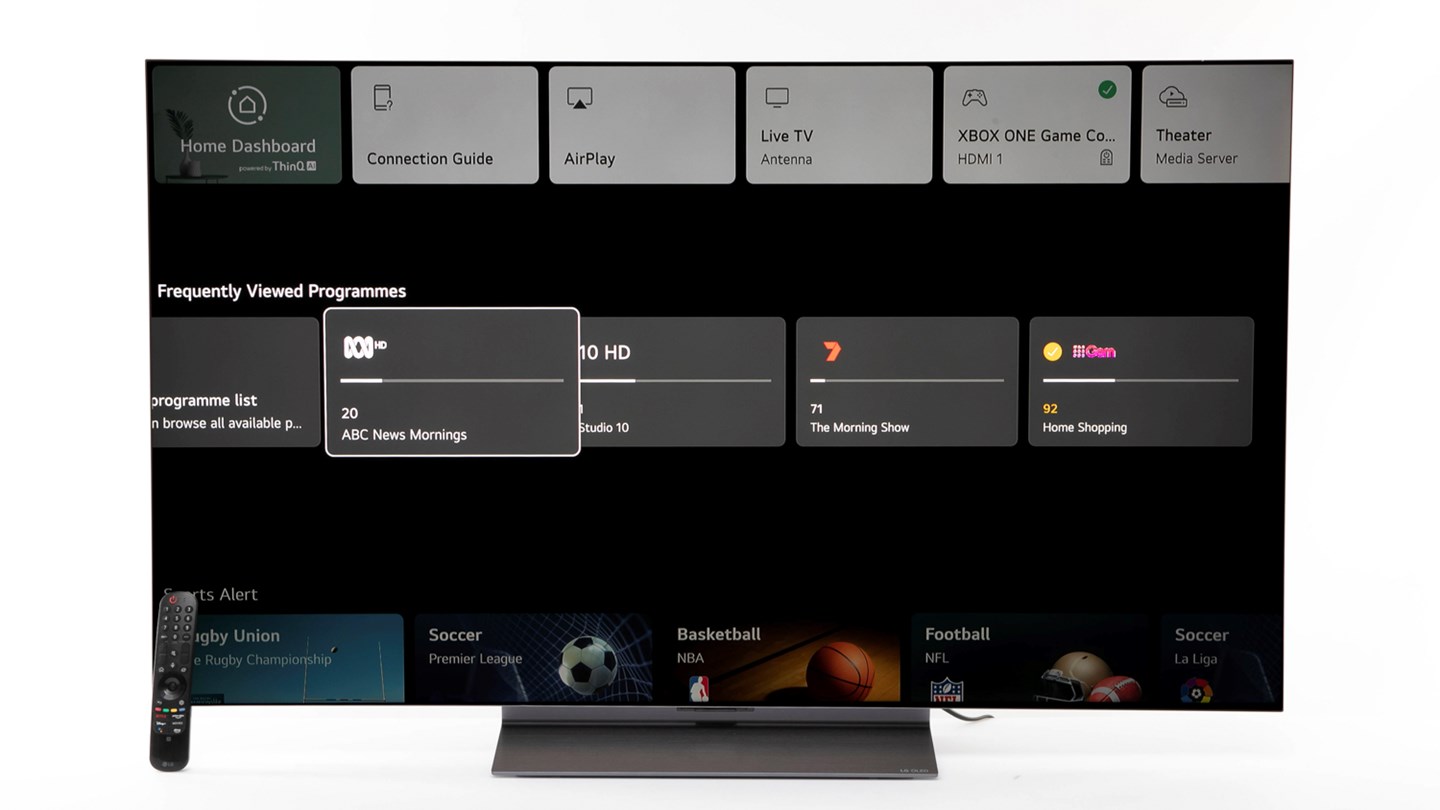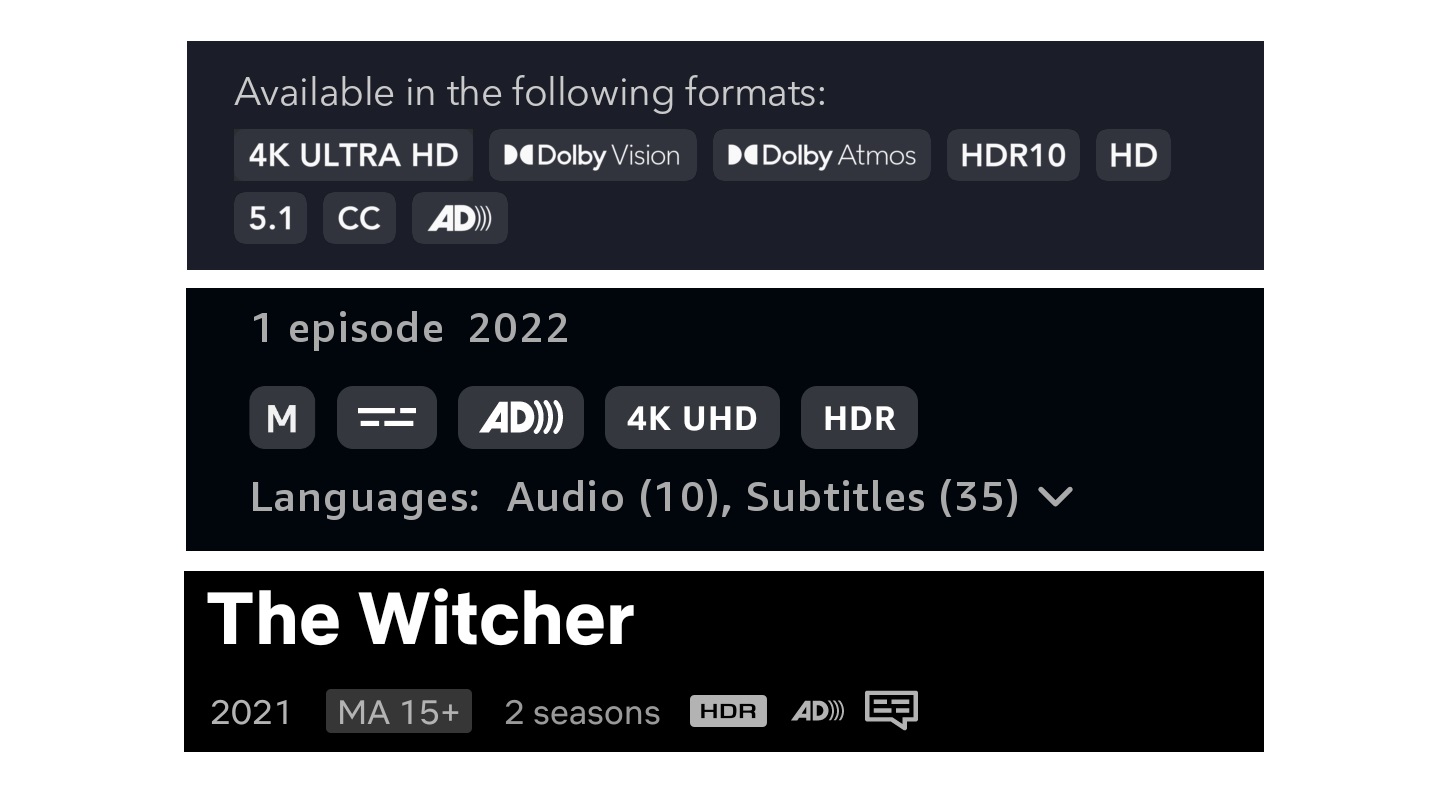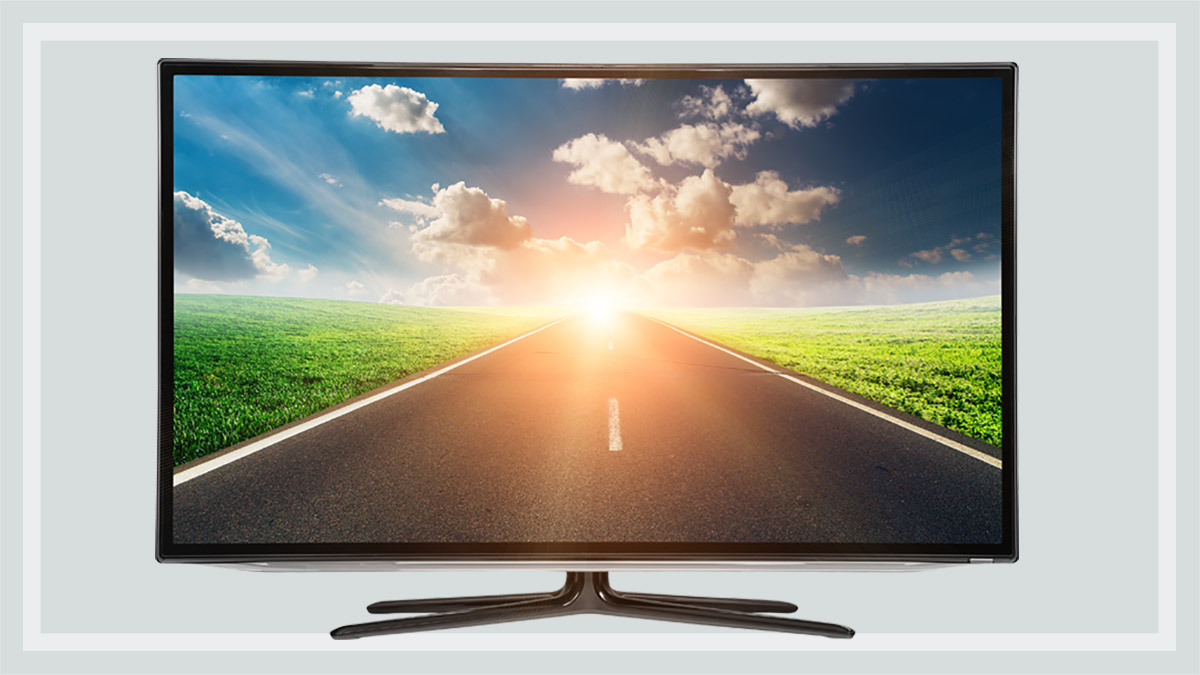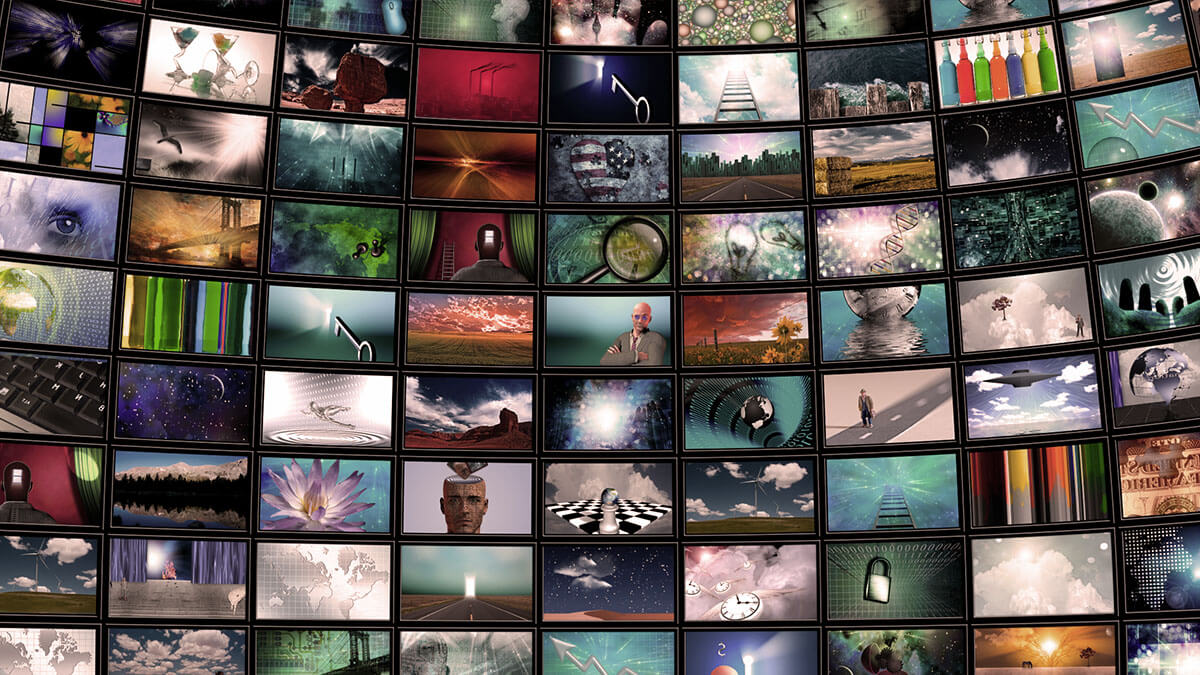Get our independent lab tests, expert reviews and honest advice.
What is high dynamic range?

High dynamic range, also known as HDR, is a major buzzword that home entertainment manufacturers, movie studios and salespeople love to throw around. And why not? This fancy image processing technology can deliver a more vibrant, lifelike picture compared to standard dynamic range content on DVD and Blu-ray.
On this page:
- What is high dynamic range?
- HDR10 vs HDR10+ vs Dolby Vision
- Does your TV support HDR?
- Picking your preferred version of HDR
- How to watch HDR content
- How to find HDR content
- What about wide colour gamut?
But how does it actually work? There’s a fair bit going on behind the scenes when you watch an HDR-enabled 4K (UHD) disc or stream an HDR movie, so it’s worth getting your head around the basics. That way you’ll know exactly what to look for when you’re buying a new TV, games console, media player or selecting something to watch on a streaming service.
Note that this beginner guide looks at HDR in relation to TVs. It doesn’t cover HDR processing on mobile devices, computers and monitors, which can be a bit different.
What is high dynamic range?
High dynamic range (HDR) refers to the contrast levels between the darkest blacks and brightest whites. It’s a significant step up from the standard dynamic range (SDR) that has been around for decades, and aims to deliver a more lifelike, vibrant image with greater nuance in bright and dark shades that can help preserve details.
HDR does this by increasing the level of accessible luminance in the image. Luminance is measured in ‘nits’ in this context, and the more nits you have, the closer you can get to seeing what the filmmakers captured while making their movie. The maximum luminance that a TV (and piece of content) can reach is called its peak brightness.
When content goes from the camera to the editing room, HDR processing is applied. This is called HDR grading. Some consumer cameras, such as your smartphone, can do HDR grading automatically.
You can find HDR encoding on movies, TV shows, games and more across physical media and streaming services.
How does HDR work?
Let’s use a candle as an example, where the brightest part of the flame measures 800 nits. SDR TVs typically have a luminance range of 100–300 nits, which means bits of the candle that are between 300–800 nits are essentially dimmed for presentation. However, most HDR TVs hover around 1000 nits, so they can accurately display the flame.
Not only does this look more realistic, it allows the nuances of the image to come through. Instead of a flat white light at 300 nits, all the little visual elements between 300 and 800 nits are displayed. This can also help retain details in dark areas, as SDR tends to ‘even out’ the image, so to speak, within its limited range.
Good to know
It’s also worth getting your head around the basics of colour bitrates. This essentially indicates how many colours are available when HDR grading is applied. HDR content is typically processed with 10-bit or 12-bit colour, which means the filmmakers have access to about one billion or over 68 billion colours respectively.
More colours means a more natural-looking image, as they allow your TV to display a range of shades and hues. Colours can naturally flow into one another, such as different shades of blue in the sky, and that also reduces colour banding.
Three photos (flowers by a lake, a rainbow lorikeet and a path by a river) shown in both Standard Dynamic Range and High Dynamic Range to illustrate the difference between the two.
Note: HDR content is not visible on an SDR screen and our website cannot process images in HDR. To illustrate the effect of HDR, we edited the SDR images above to simulate the differences.
HDR10 vs HDR10+ vs Dolby Vision
There are three different types of HDR available in Australia: HDR10, HDR10+ and Dolby Vision. One of these is applied during the grading process and then your TV presents the image based on the specifications of that HDR codec.
All HDR TVs and content support HDR10. Then, content producers can choose to also add either HDR10+ or Dolby Vision grading as well. This is because while all TVs support HDR10, not all TVs can decode HDR10+ and Dolby Vision. In this instance, content encoded in HDR10+ or Dolby Vision will automatically revert to HDR10 if your TV doesn’t support one or the other.
HDR10
The open source industry standard has a peak brightness of 1000 nits, with 10-bit colour and static metadata. This means that an approximation of the ideal brightness and darkness levels are applied either to scenes or the entire film.
HDR10+
This version of HDR is developed by Samsung and has a peak brightness of 4000 nits, 10-bit colour and uses dynamic metadata. This means that your TV can adjust scenes to their optimal brightness and darkness levels on the fly, which helps create a more realistic-looking image.
Dolby Vision
Developed by, you guessed it, Dolby Labs, Dolby Vision also uses dynamic metadata so it’s similar to HDR10+. But it does have a technological edge, with support for up to 10,000 nits and 12-bit colour.
Other versions of HDR
There are two other HDR versions that you might have read about online, but these aren’t available in Australia.
Hybrid Log Gamma (HLG): This is an HDR broadcast standard developed in the UK and Japan. Though it’s mostly used by TV networks such as the BBC and Sky News, some YouTube content is also available in HLG. Currently no Australian networks broadcast content in HLG or HDR of any kind.
Advanced HDR by Technicolor: Yet another competing standard, only this one never got off the ground. While some TV manufacturers backed it, Technicolor didn’t capture the attention of content creators and it’s since disappeared.
Does your TV support HDR?
If you bought a new TV in the past eight years or so then yes, it most likely supports HDR. If you’re shopping for a new TV, you’ll notice that manufacturers tend to loudly advertise which version is supported (be it on the showroom floor, product packaging or online). But not all TVs can take advantage of everything HDR has to offer.
TV panels can only get so bright. Though this information is rarely included in the specs, OLED panels typically output 700–900 nits of peak brightness, while LCDs and QLED can push 1000 with the brightest ones reaching around 1400 nits. A small handful of recently released OLED TVs claim to surpass 1000 nits too.
When buying a new TV, it’s best to understand the technology on offer without getting caught up in it
So even though HDR10+ and Dolby Vision each have a high peak brightness, you won’t find a TV that can fully take advantage of that. Similarly, there aren’t any 12-bit capable TVs on the market right now. Almost all 4K HDR TVs are 10-bit.
That means that while Dolby Vision is the clear winner on paper, it’s more or less the same as HDR10+ in practice. When buying a new TV, it’s best to understand the technology on offer without getting caught up in it.
It might be worth keeping your entertainment sources in mind too. Netflix and Disney+ both support HDR and Dolby Vision, but not HDR10+ (as of April 2022) so a Dolby Vision-enabled TV would make sense if you mostly use those streaming services.

But Dolby Vision and HDR10+ support is fairly evenly spread when you factor in all physical media and streaming services. Also, streaming services may change their codecs down the line, so you’re not really future proofing. At the end of the day, it’s best to trust your eyes and go with one that looks best to you and fits within your budget.
Things can vary depending on the source – a lot of the Pixar and Star Wars movies use HDR10 on disc, but offer Dolby Vision if you stream via Disney+.
Picking your preferred version of HDR
If you’re watching content that supports more than one HDR codec, then your TV and/or player will default to the best option that it supports. For example, a movie with HDR10 and Dolby Vision will play the Dolby Vision version.
You can’t pick your preferred codec, but some TVs and players give you the option to turn HDR10+ and Dolby Vision on and off as you please, if you prefer the look of the HDR10 version. The various iterations of Microsoft Xbox since the Xbox One X let you toggle Dolby Vision in the settings, for instance. When you turn if off, all HDR content will default to HDR10 even if it supports Dolby Vision too.
Note that this isn’t a widespread feature and depends on the manufacturer and model of your player and TV.
How to watch HDR content
This is where a lot of pieces need to fall into place, and also where you find out that there’s a big difference between what HDR is capable of and what it’s actually used for. First, let’s cover the three main components required.
- An HDR-enabled TV: Remember they all support HDR10 but more expensive models will add either HDR10+, Dolby Vision or both.
- An HDR-enabled player: This can be a smart TV if you only use video streaming services. Like TVs, not all players support HDR10+ or Dolby Vision.
- HDR content: This can be on disc or from a streaming service.

Note that if you’re using an external media device such as a games console, 4K UDH player or media streamer, you’ll also need an HDMI 2.0a or 2.1-compatible cable. Also, you may need to enable HDR in your TV’s HDMI settings. You can find these instructions in the manual.
If everything is working, then your TV should automatically switch into HDR, HDR10+ or Dolby Vision mode when it detects the content. An HDR icon should appear in the top left or right corner when it flicks over but you can also check the picture settings to confirm. When you’re done, your TV will turn off HDR mode and flick back to SDR until it detects HDR content again.
Finding an HDR player
You have a few options here. Most of the popular streaming services such as Netflix, Prime and Disney+ can be installed on smart TVs which almost always support HDR. Otherwise a games console is probably your next best bet. The Xbox One X/S, Xbox Series X/S, PlayStation 4 Pro and PlayStation 5 all support HDR streaming and UHD discs (except the PS4 Pro, which only supports 4K HDR streaming).
How to find HDR content
Streaming services and physical media will show you which movies and shows are available in HDR. This includes HDR10+ and/or Dolby Vision support where available.
Streaming services
HDR details are usually next to the story synopsis, with extra specifications in the ‘information’ or ‘details’ subcategories. They generally show you the best HDR version available with the stream and some are even clever enough to show you the best possible version that your TV supports.
For example, most Netflix originals are available in Dolby Vision. But if you have an HDR10+ TV without Dolby Vision support, then the Netflix interface will say ‘HDR’ as that’s the best your TV can deliver.

Netflix users need a Premium account to access HDR whereas some single-price services like Amazon Prime Video and Disney+ include it by default. Though the amount of HDR content is growing, it isn’t available on all services in Australia – for example, Stan doesn’t support HDR despite having 4K streams.
Physical media
HDR is exclusive to 4K UHD discs. This means you won’t find HDR-encoded content on DVD or Blu-ray. Almost every movie and show released on 4K UHD disc supports HDR10 and this is proudly proclaimed on the front or back of the case. Extra information about HDR10+ and/or Dolby Vision availability is typically printed in the technical information on the back, towards the bottom.
If information is sparse or you just want to double check, head over to blu-ray.com. In addition to reviews, they also provide all the technical specifications including HDR support for just about any film or show you can think of.

What about wide colour gamut?
This is an equally important, but much less often mentioned, feature found in new TVs. Basically, older TVs could only display colour within a certain range and content was made to fit within that limitation. Wide colour gamut (WCG) panels and content extend this range to create more colourful colours, so to speak.
This also improves nuance in colours to help create a more lifelike image. Where a standard colour gamut TV might only be able to show one shade of red, a WCG TV could show six shades all within a similar space, depending on the panel’s bit depth.






